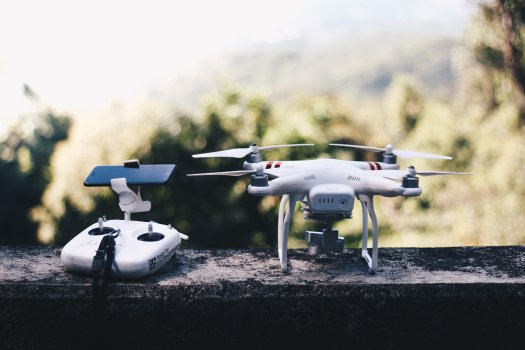K
Kathleen Martin
Guest
Everybody has heard about drones by now, but there are several other oft-used terms like UAS and UAV that tend to confuse readers. So, what exactly is a drone and how is it different from these other commonly heard terms such as UAS, UAV, FPV, RPAS, and model aircraft?
Alina George, a project specialist in the Operational Programs Branch of the FAA’s UAS Integration Office, recently cleared the air about FAA’s preferred language when it comes to remotely piloted aircraft.
What is a drone?
According to the FAA, “drone” is the overarching colloquial term used for all remotely piloted aircraft. The FAA adopted this industry designation to describe any aircraft without a pilot onboard, regardless of size, shape, or capability. Beneath this umbrella term are several interchangeable terms (UAS, RPA, or UAV). Others denote categories, such as first-person view or model aircraft, each with slightly different use and connotation.
What is a UAS?
Although the term Unmanned Aircraft System (UAS) is used interchangeably with “drone,” a UAS is a “system” of three parts, with “drone” referring to the aircraft itself. In addition to the drone (aircraft), the UAS includes the control station and the communication link between the control station and the aircraft.

What is a UAV?
The industry has been using the term Unmanned Aerial Vehicle (UAV) interchangeably with UAS. However, following the 14 CFR part 89 regulation, the FAA has chosen to define the term “unmanned aircraft” (UA) as the aircraft itself, to distinguish the system from the aircraft. As such, the industry’s UAV term and the FAA’s UA term are really just part of a UAS. Either term can refer to fixed-wing UAs or multirotor aircraft.
And even though UAV is mostly associated with military aircraft, it can be used for a variety of other functions. UAV can also be semi-autonomous, meaning that the aircraft performs using sensors, a ground control system, and specific software programming.
Continue reading: https://dronedj.com/2021/12/07/drone-uav-uas-difference-explained/
Alina George, a project specialist in the Operational Programs Branch of the FAA’s UAS Integration Office, recently cleared the air about FAA’s preferred language when it comes to remotely piloted aircraft.
What is a drone?
According to the FAA, “drone” is the overarching colloquial term used for all remotely piloted aircraft. The FAA adopted this industry designation to describe any aircraft without a pilot onboard, regardless of size, shape, or capability. Beneath this umbrella term are several interchangeable terms (UAS, RPA, or UAV). Others denote categories, such as first-person view or model aircraft, each with slightly different use and connotation.
What is a UAS?
Although the term Unmanned Aircraft System (UAS) is used interchangeably with “drone,” a UAS is a “system” of three parts, with “drone” referring to the aircraft itself. In addition to the drone (aircraft), the UAS includes the control station and the communication link between the control station and the aircraft.

What is a UAV?
The industry has been using the term Unmanned Aerial Vehicle (UAV) interchangeably with UAS. However, following the 14 CFR part 89 regulation, the FAA has chosen to define the term “unmanned aircraft” (UA) as the aircraft itself, to distinguish the system from the aircraft. As such, the industry’s UAV term and the FAA’s UA term are really just part of a UAS. Either term can refer to fixed-wing UAs or multirotor aircraft.
And even though UAV is mostly associated with military aircraft, it can be used for a variety of other functions. UAV can also be semi-autonomous, meaning that the aircraft performs using sensors, a ground control system, and specific software programming.
Continue reading: https://dronedj.com/2021/12/07/drone-uav-uas-difference-explained/

